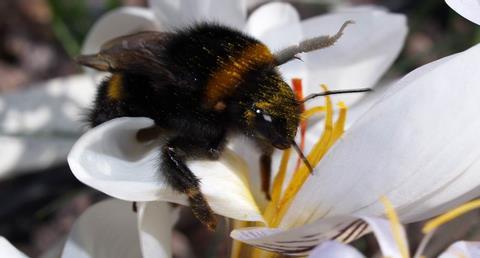COMMENT: Ali Al Suhail, associate at boutique investment bank DAI Magister, outlines potential long-term smart-tech solutions to the global bee crisis and ensuing food supply risk

The populations of pollinator insects are facing an alarming and unsustainable decline due to the combined impacts of climate change, habitat loss, and the heightened use of pesticides. Between April 2022 and April 2023, honeybee hives endured the second-highest mortality rate in the last 12 years with 48 per cent of colonies lost.
These mounting concerns are a danger to the 33 per cent of global food production that is reliant on pollination – a sector with a value of €153bn. However, introducing innovative and unconventional approaches to pollination could mitigate the damage caused by the declining bee population.
Shrinking populations of pollinator insects have triggered global fears regarding the future of our food system, due to the indispensable role bees and pollination play in food production. Despite ongoing struggles, a new vertical within agri-tech is now coming to the fore, focused on developing innovative and tech-driven solutions that can ease pressures.
Bee pollination is a complex and intricate process that requires consideration of various factors such as farm location, crop types, and beehive placement to optimise farmer yields and bee health. These factors must also be weighed against the conditions within bee colonies and hives.
Technology has emerged in this space that employs different approaches to enhance the pollination process, often utilising an IoT hardware component and AI-powered software. For example, smart beehive systems combine hardware and data-driven insights to enhance the honeybee pollination ecosystem. These systems monitor bees 24/7 and remotely administer real-time treatments and care for bees according to their needs.
Robot pollinators also have a significant role to play in securing the future of global food production.
Robot pollinators represent a ground-breaking advancement that could transform pollination in the high-value specialty crop segment. While artificial robot pollination might seem like a concept drawn from science fiction, it follows the same well-established artificial insemination process practised in the dairy industry.
Phase one begins with collecting and storing pollen derived from the male floral component, the stamen. This amassed pollen gets preserved for subsequent utilisation. The second and final phase encompasses the implantation of this stored pollen into the female part of another plant, referred to as the stigma, at a predetermined and optimal time. The aim is to achieve precise and efficient pollination while mitigating the variables that can hinder successful pollination when left to natural processes.
Robots also play a pivotal role in mitigating the risk of disease transmission, achieved through an innovative air-blast pollination method that fertilises flowers without direct physical interaction. While certainly there are advantages to using robots as pollinators, the model is yet to prove economically viable and requires further development before it can be widely implemented.
Innovative start-ups are also looking to shore up the honeybee population and subsequent pollination crisis through advanced technologies designed to bolster bee strength and resilience. These initiatives encompass a range of approaches, from deploying systems to protect bees from biological threats to mitigating the impact of detrimental pesticides on bee health and increasing bee resilience to the fluctuating climatic conditions caused by climate change.
Emerging innovations and technologies in pollination can enhance bee health and well-being and provide new ways to pollinate crops more effectively and efficiently, playing a key role in helping us meet our future food production needs amid the continued decline in bee numbers.



